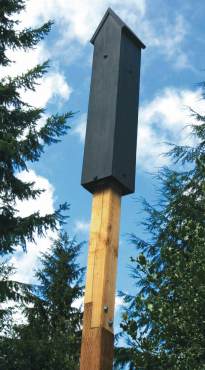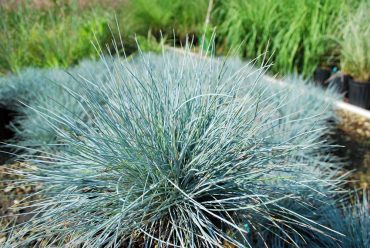
Bats Eat Insects Galore
Bats were a topic in this column in fall of 2008. Since a horribly devastating disease called “white nose syndrome” or WNS is decimating bat populations nationwide, it’s appropriate to revisit information about one of nature’s most awesome weapons in controlling insects.
Bats feed on night-flying gnats, moths, mosquitos, beetles and flies. Studies estimate a single bat can eat thousands of insects in one night. Farmers rely on bats to control insect populations, thus reducing the use of pesticides.
Some people think of bats as flying rodents but that is a myth. Bats are related to primates and represent about one-quarter of all mammal species. Worldwide, bats range in size from the weight of a penny to those with 6-foot wingspans. Their wings are actually part of their arms and their fingers are elongated to give the wings shape, structure and support.
A bat’s circulatory system is adapted so it can hang upside down for long periods of time. Studies surmise it’s to provide safer roosts for the bats, allowing them to fit into narrow spaces. Their bodies are designed so they can literally spread their wings and go.
Bats can fly for sustained periods. Their stamina and ability permits them to migrate; however, some bats hibernate. The bats in West Sound come in both varieties.
West Sound bats are the most active in summer into fall. Females usually have one baby per year. Bats have the ability to delay fertilization and synchronize giving birth so that females in a colony all give birth during the same period. Usually this is in June.
The bats care for and groom each other and the births are timed to coincide with availability of the most insects. Bats, as a rule, are long-lived. Some live for three decades. Fossils have been found showing that bats were here on Earth beginning 50 million years ago.
Most of this region’s bats live in trees, under shingles, in attics and in bat houses. The species called “little brown bats” frequent bat houses. They live 10 years on average.
It is important to locate bat houses far enough away from your home to deter bats from entering attic vents. It’s a good idea each year to check your home to make sure there are no entryways not only for bats, but other creatures.
The migrating population of bats from this region leaves for Mexico in October and November. The hibernating bats here use cave entrances, tree cavities, bat houses and sometimes attics.
When temperatures warm up in March or April, they begin returning to the places where they were born. No scientists have yet discovered how they do this. It’s surmised they use mountain ranges and even reference points along their flight paths. Some scientists even think it’s genetically patterned in the bat families or is somehow passed on from generation to generation.
In “Landscaping for Wildlife in the Pacific Northwest,” wildlife biologist Russell Link provides information on Northwest bats and illustrates how to build a bat house. He even explains what color to paint bat houses depending on each property’s landscape conditions. Bats are dependent on certain temperatures for optimal survival. The color of the bat house regulates the temperatures required.
For more information on bats and white nose syndrome, see the sidebar for websites to visit. Remember, we would be overrun with insects if it weren’t for bats.

Perfect Time to Plant Ornamentals
Fall is the perfect season to purchase and plant woody ornamental plants, both hybrid and native. For ideas, if time allows, take a walk through Heronswood, Bloedel, Buck Lake Native Plant garden or Fish Park in Poulsbo. The first two gardens have a plethora of plants and ideas and both Buck Lake and Fish Park are filled with native plants. Buck Lake is a more cultivated native plant demonstration garden and Fish Park is more wild. (To see some of the native plants at Buck Lake, visit my latest “Gardening with Peg” video.)
Visit local nurseries to see fall color. Take a notebook with you to these locations or use your smartphone to take photos and make notes. Then go home and think about what plants you might want to add to your own gardens. Be sure to read up on the water needs, growing conditions and size of plants at maturity before you shop and purchase them for an existing landscape.
Washington State University specialists and researchers have compiled three different resources to assist gardeners in making selections of plants. One web page is a compendium with photos of several thousand plants, from ground-hugging to the tallest of trees.
Another section contains detailed information about drought-tolerant bulbs, ornamentals and trees suitable for Eastern Washington, but every plant on the list can be utilized in drought conditions on the west side of the state. One or two may not appreciate the very wet seasons sometimes found here, but most of the plants recommended will thrive here as well as on the other side of the Cascades. Also try out the “Find Plant” section of the WSU PNW Plants website.
Discussions always abound on how to properly plant ornamentals. Many resources recommend adding amendments to the planting hole. Researchers and experienced plant experts no longer give this recommendation.
If enrichment is deemed necessary, it’s best to add amendments to a large area, not just the planting hole. When amendments are added to the planting hole, the roots tend to stay put and not venture out into the rest of the soil. Once the roots have exhausted the conditions in the hole, they often die.
Compost is only recommended as a top dressing. Compost tends to hold moisture and can sometimes create a well of moisture that ends up rotting the roots of the plant. Experts and researchers also do not recommend fertilizer at planting time, especially in the fall and winter months when plants are going into dormancy.
But new plants will need regular watering, even native plants. Regular watering often means once a week for several months. Gauge this according to how much rain falls during the fall and winter months.
Become a Master Gardener or Obtain a Certificate in Horticulture Basics
WSU Kitsap Extension offers a Master Gardener course each year to local gardeners who wish to volunteer in their communities assisting the public in learning about gardening. This course is also available, for a higher fee, for those who don’t wish to volunteer but want to learn about horticulture and receive a certificate only. Space in the Certificate in Horticulture Basics section is limited. Classes are conducted on 12 Fridays during the first four months of each year.
It’s important to register online or call the Extension office during September or at the latest in October, in order to receive notification about the informational meeting where questions are answered and applications are accepted.
To learn more about the WSU Kitsap MG Program, go to ext100.wsu.edu/kitsap/gardening/master-gardeners and find out how to apply for the training. Training includes in-class experiences, speakers, hands-on learning and online education. Fees are involved and scholarships are available. Call 360-337-7157, ext. 0, or Colleen Miko at cmiko [at] co [dot] kitsap [dot] wa [dot] us for questions.

































Comments